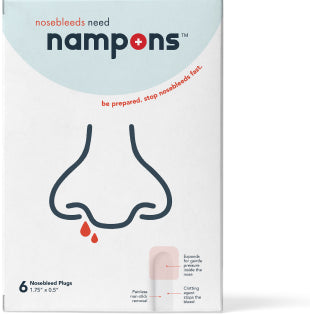Hereditary Hemorrhagic Telangiectasia (HHT) is a very rare condition that's thought to affect up to 1.6 million people worldwide.
However, that doesn't tell the whole story as many people with this inherited disorder don't know they have it. It's not uncommon for a diagnosis to be delayed for years and even decades, and in some cases, that diagnosis never comes.
So, just how rare is HHT, and how does that rarity compare to other rare diseases and disorders?
How Rare is Hereditary Hemorrhagic Telangiectasia (HHT)?
It's often said that HHT affects around 1 in 5,000 people, with some reports leaning toward a more conservative 1 in 8,000 or even 1 in 10,000.
In the United States, that equates to around 66,000 people, which is why you'll often hear that there are over 60,000 Americans with this rare disorder. (1)
If we do the same math on the global population, we get a figure of around 1.6 million, close to the 1.4 million quoted by Cure HHT.
In reality, however, we don't really know and these figures are just estimates.
As noted by Cure HHT, many people with HHT don't display symptoms until they reach their 40s or 50s, and 5% won’t show any symptoms during their lifetime. (2)
Most cases of HHT are detected because the patient displays symptoms such as frequent heavy nosebleeds, headaches, gastrointestinal bleeding, and anemia. If a physician suspects HHT, they will lookout for these signs and then screen for telangiectasia, a condition characterized by a series of small red spots (often on the lining of the nose, but also on the skin) and arteriovenous malformations (AVMs), which are vascular malformations that can occur in the brain, liver, lungs, GI tract, and spine.
HHT Patients Worldwide
HHT is diagnosed in both men and women and occurs across all ethnic groups.
It is rarely diagnosed in Africa, but this likely has more to do with under-diagnosing than an actual absence of the disorder. (3)
Even in the United States, HHT is commonly misdiagnosed and such issues are more common in poorer countries with limited access to healthcare and the means of proper clinical diagnosis.
HHT Compared to Other Rare Disorders
HHT patients account for just 0.02% of the US population. ALS, which is inherited in 90% of cases, affects just 0.0045% while approximately 0.01% have Huntington's disease. Both of these rare diseases are known to significantly reduce life expectancy, while HHT reduces it by an average of just 3 years. (4)
By their very nature, rare diseases occur infrequently, but as there are a large number of them, it has been estimated that as many as 30 million Americans could be affected, equating to nearly 10% of the US population. (5)
Diagnosing a Rare Genetic Disorder Like HHT
HHT is a genetic disorder passed from a parent to a child. It is dominant, and so it does not skip a generation. If one of your parents has this rare disease then there is a 50% chance you will get it as well.
As a result, family history and genetic testing can help when diagnosing HHT.
You should also watch out for the symptoms, including frequent nosebleeds. If you're not happy with a diagnosis, ask for further tests or speak with other health care providers. HHT is an under-diagnosed disease, and so it's commonly passed off as anemia, asthma, and a host of other less serious conditions.



